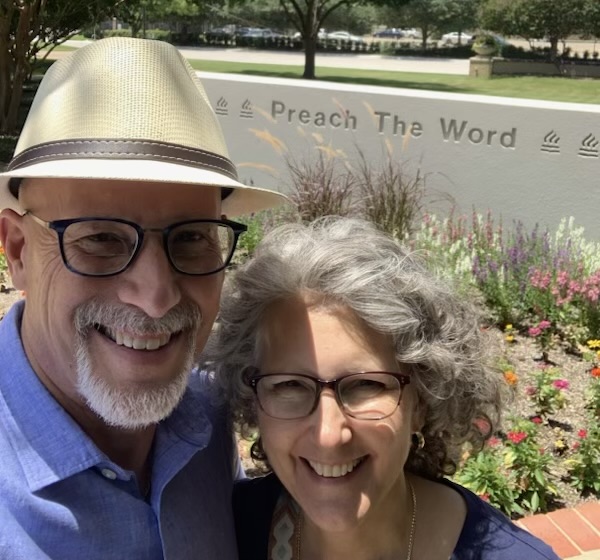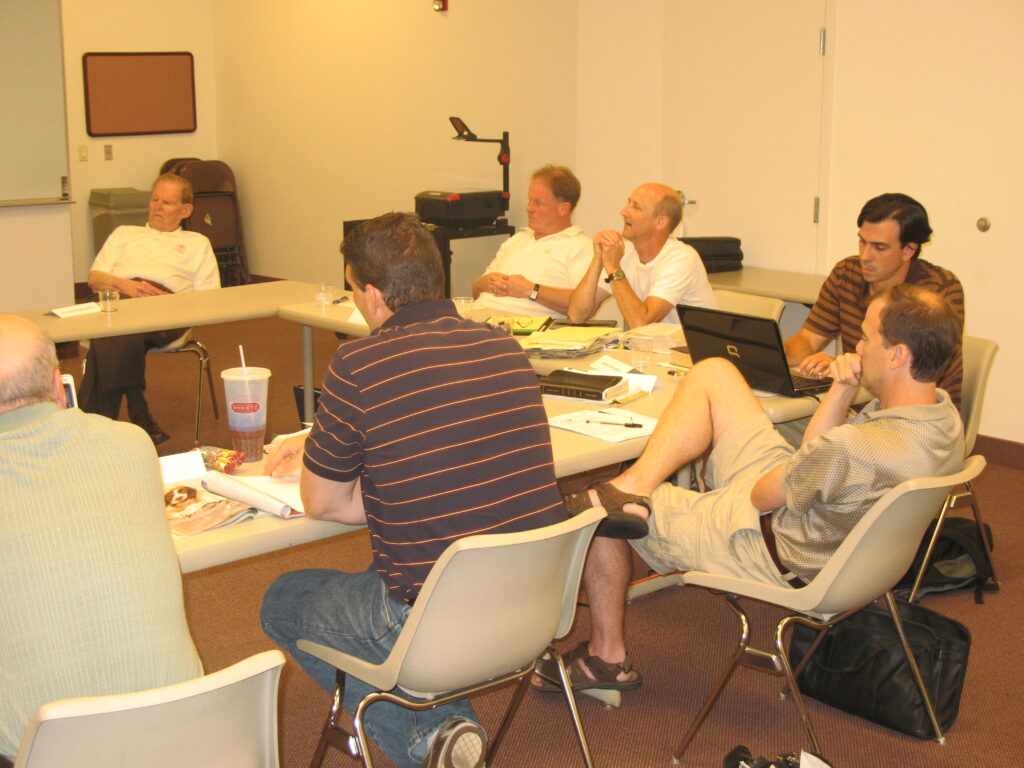First, thanks to the kindness of Calvary Bible Church’s leadership, I am on sabbatical this summer. That explains the inconsistent postings.
Second, the picture shows me and Michele in front of the sign off of Live Oak street on the campus of Dallas Theological Seminary. We stood by that sign in 1989 upon graduating with my Th.M. degree. What a special place for us!
Third, this past Tuesday I had the privilege to teach a Doctor of Ministry preaching cohort at DTS. This past fall the lead professor, Dr. Roger Raymer, asked if I would teach on redemptive-historical preaching.
To prepare, I read The Southern Baptist Journal of Theology (volume 22, number 3, fall 2018, titled, Preaching Christ from the Old Testament). My old DTS professor, Elliot Johnson, and WTS professor, Vern Poythress, were two major contributing authors. Along with another major contributor, Daniel Block, ten respected scholars evaluated each position. It’s a great way to familiarize yourself with some views.
My second task was deciding how to simplify some things since there is a dizzying array of thoughts about Christ-centered preaching. So, here is how I approached the subject matter:
- Think of the OT as containing two kinds of texts, salvation and judgment. A Christ-centered hermeneutic/homiletic will accomplish something like: (a) any salvation text in the OT functions for the church because those who are in Christ experience some facet of salvation mentioned in that OT text due to the Christ-event; (b) those in Christ escape the judgment announced in the text because God judged Christ on the cross. A primary hermeneutical question is how those texts will apply to the Church if you decide not to interpret/apply those texts within the context of the whole Canon of Scripture.
- Think of OT characters functioning in two ways, either “go and do likewise” or “go and do otherwise.” Just don’t ask parishioners to follow or avoid their example without first addressing the point above. That will keep you from sounding like you’re promoting moralism. Unlike the common alternative to Christ-centered preaching, God-centered, this approach allows the OT to guide our Christian lives just like the Apostles said it should (“These things were written as our examples…”).
Just a couple of ways to simplify some of the subject matter. Lots more could be said and I would be happy to discuss it further with you while I have extra time this summer!
May our Lord receive glory in the church and in Christ Jesus (Ephesians 3:21) as you preach Him each Sunday according to your method.
Randal









